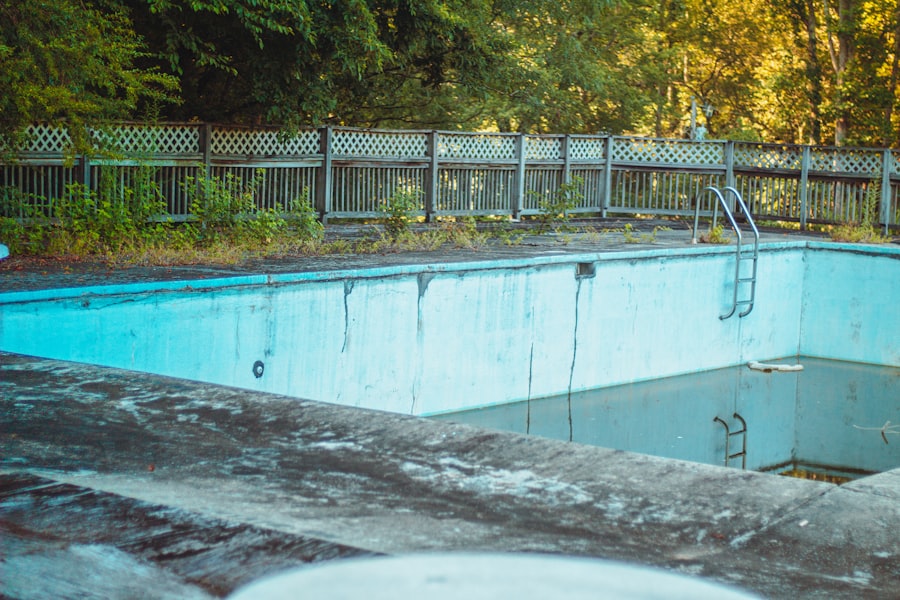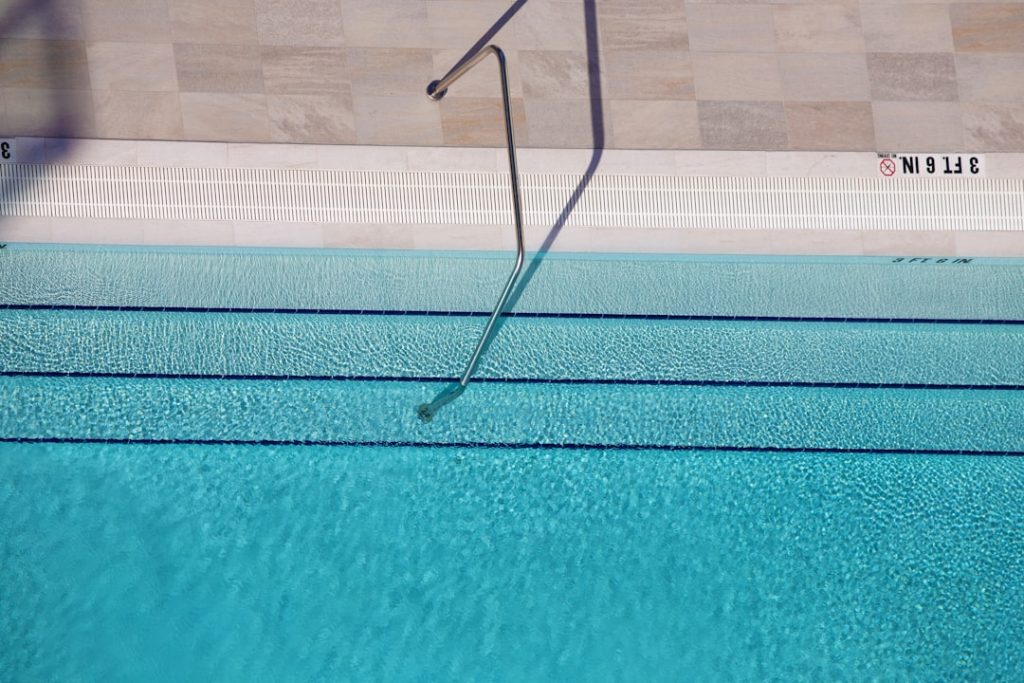Pool remodeling is not merely a cosmetic upgrade; it is a vital investment that can significantly enhance the functionality, safety, and aesthetic appeal of your swimming pool. Over time, pools can suffer from wear and tear, leading to issues such as cracks, leaks, and outdated designs that no longer meet the needs of homeowners or their families. By undertaking a remodeling project, you can address these concerns while also increasing the overall value of your property.
A well-maintained and modernized pool can serve as a focal point for outdoor gatherings, providing a refreshing escape during hot summer months and a space for relaxation and recreation. Moreover, remodeling your pool can also improve safety features, which is particularly important for families with children or pets. Upgrading to non-slip surfaces, installing safety barriers, or incorporating advanced pool covers can mitigate risks associated with pool ownership.
Additionally, a remodel can allow for the integration of modern technology, such as automated cleaning systems and smart pool controls, which not only enhance convenience but also promote a safer swimming environment. In essence, pool remodeling is an opportunity to revitalize your outdoor space while ensuring it remains a safe and enjoyable area for all.
Key Takeaways
- Pool remodeling enhances both the functionality and visual appeal of your outdoor space.
- Choosing a reputable local remodeling company ensures quality and convenience.
- Various remodeling options allow customization to fit your style and needs.
- Proper budgeting is essential to manage costs and avoid unexpected expenses.
- Incorporating energy-efficient features can reduce long-term maintenance and utility costs.
Finding the Right Pool Remodeling Company Near You
Selecting the right pool remodeling company is crucial to the success of your project. The first step in this process is to conduct thorough research on local contractors who specialize in pool renovations. Start by seeking recommendations from friends, family, or neighbors who have recently completed similar projects.
Online reviews and testimonials can also provide valuable insights into the quality of work and customer service offered by various companies. Websites like Angie’s List or Yelp can be excellent resources for finding reputable contractors in your area. Once you have compiled a list of potential candidates, it is essential to evaluate their credentials and experience.
Look for companies that are licensed and insured, as this protects you from liability in case of accidents during the remodeling process. Additionally, inquire about their experience with projects similar to yours. A contractor with a proven track record in pool remodeling will be better equipped to handle any challenges that may arise during the renovation.
Schedule consultations with your top choices to discuss your vision, ask questions about their approach, and request detailed estimates. This will not only help you gauge their expertise but also allow you to establish a rapport with the contractor, which is vital for a successful working relationship.
Exploring Different Pool Remodeling Options

When it comes to pool remodeling, the options are virtually limitless, allowing homeowners to tailor their projects to meet specific needs and preferences. One popular option is resurfacing the pool interior, which can involve applying new plaster, pebble finishes, or tiles. This not only refreshes the look of the pool but also addresses any structural issues that may have developed over time.
For instance, if your pool has developed unsightly stains or rough patches, resurfacing can restore its original beauty while providing a smoother surface for swimmers. In addition to resurfacing, homeowners may consider upgrading their pool’s coping and decking materials. Traditional concrete may be functional but lacks visual appeal; opting for natural stone, pavers, or decorative concrete can create a more inviting atmosphere around the pool area.
Furthermore, adding features such as waterfalls, fountains, or lighting can transform an ordinary pool into a luxurious oasis. These enhancements not only elevate the aesthetic value but also create a more enjoyable swimming experience. Homeowners should take time to explore various materials and designs to find the perfect combination that aligns with their vision.
Budgeting for Your Pool Remodeling Project
| Category | Estimated Cost Range | Percentage of Total Budget | Notes |
|---|---|---|---|
| Design and Planning | 1,000 – 3,000 | 5% – 10% | Includes architectural plans and permits |
| Demolition and Removal | 2,000 – 5,000 | 10% – 15% | Removing old tiles, coping, or pool equipment |
| Pool Surface Resurfacing | 4,000 – 10,000 | 20% – 30% | Plaster, pebble, or tile finishes |
| Equipment Upgrades | 3,000 – 8,000 | 15% – 25% | New pumps, filters, heaters, or automation |
| Decking and Landscaping | 2,000 – 7,000 | 10% – 20% | Patios, pavers, plants, and lighting |
| Contingency Fund | 1,000 – 3,000 | 5% – 10% | Unexpected expenses or changes |
| Total Estimated Budget | 13,000 – 36,000 | 100% |
Budgeting is a critical aspect of any remodeling project, including pool renovations. Before diving into the specifics of your remodel, it is essential to establish a clear budget that outlines how much you are willing to spend. This budget should encompass all aspects of the project, including materials, labor costs, permits, and any additional features you wish to incorporate.
It is advisable to set aside an extra 10-20% of your budget as a contingency fund to cover unexpected expenses that may arise during the renovation process. To create an accurate budget, begin by obtaining detailed estimates from multiple contractors based on your desired scope of work. This will provide you with a clearer understanding of the costs involved and help you identify areas where you may need to adjust your plans.
For example, if high-end materials exceed your budget, consider alternative options that still achieve the desired look without breaking the bank. Additionally, be open to prioritizing certain features over others; perhaps you can focus on essential repairs first and save aesthetic upgrades for later. By approaching budgeting with flexibility and foresight, you can ensure that your pool remodeling project remains financially manageable.
Maximizing Space and Functionality with Pool Remodeling
One of the primary goals of pool remodeling is to maximize both space and functionality within your outdoor area. Many homeowners find that their existing pool layout does not fully utilize the available space or accommodate their lifestyle needs. For instance, if you frequently host gatherings or family events, consider expanding the deck area or adding built-in seating around the pool.
This not only enhances usability but also creates an inviting atmosphere for entertaining guests. Incorporating additional features such as swim-up bars or integrated hot tubs can further enhance functionality while providing unique experiences for swimmers. If space allows, consider adding a shallow lounging area where children can play safely while adults relax nearby.
These design elements not only improve the overall flow of your outdoor space but also ensure that your pool serves multiple purposes—whether it’s for exercise, relaxation, or socializing. Thoughtful planning during the remodeling process can lead to a more versatile and enjoyable outdoor environment.
Enhancing Aesthetics and Style through Pool Remodeling

Aesthetics play a significant role in how much enjoyment you derive from your swimming pool area. Pool remodeling offers an excellent opportunity to enhance the visual appeal of your outdoor space through various design elements and materials. For instance, choosing a cohesive color palette that complements your home’s architecture can create a harmonious look that ties everything together.
Whether you prefer a modern minimalist style or a more traditional aesthetic, there are countless options available to suit your taste. In addition to color schemes, consider incorporating landscaping elements around your pool area to create a lush oasis feel. Strategically placed plants, flowers, and trees can soften hardscapes while providing privacy and shade.
Lighting is another critical aspect of aesthetics; installing LED lights around the pool or underwater can create stunning visual effects at night while enhancing safety for evening swims. By thoughtfully considering these design elements during your remodel, you can transform your pool into an eye-catching centerpiece that elevates your entire outdoor living experience.
Incorporating Energy-Efficient Features in Your Pool Remodeling
As environmental concerns continue to grow, many homeowners are looking for ways to make their pools more energy-efficient during remodeling projects. Incorporating energy-efficient features not only reduces environmental impact but also lowers utility bills over time. One effective way to achieve this is by upgrading to energy-efficient pumps and heaters that consume less electricity while maintaining optimal performance levels.
Variable-speed pumps are particularly beneficial as they allow homeowners to adjust flow rates based on specific needs rather than running at full capacity all the time. Another energy-efficient option is installing solar heating systems or covers that harness sunlight to warm the water naturally. Solar covers not only help maintain water temperature but also reduce evaporation rates—conserving water in the process.
Additionally, consider integrating LED lighting throughout your pool area; these lights consume significantly less energy than traditional incandescent bulbs while providing vibrant illumination. By prioritizing energy efficiency in your remodeling project, you contribute positively to both your wallet and the environment.
Maintaining and Caring for Your Newly Remodeled Pool
Once your pool remodeling project is complete, ongoing maintenance becomes essential to preserve its beauty and functionality over time. Regular cleaning routines should be established to prevent debris buildup and maintain water clarity; this includes skimming leaves off the surface, vacuuming the bottom, and brushing walls regularly. Additionally, monitoring chemical levels is crucial for ensuring safe swimming conditions; test kits are readily available to help homeowners maintain proper pH levels and chlorine concentrations.
Seasonal maintenance tasks should also be considered; for instance, winterizing your pool if you live in colder climates involves draining water from pipes and covering the pool properly to prevent damage from freezing temperatures. Investing in high-quality maintenance equipment can simplify these tasks significantly—robotic cleaners can automate much of the cleaning process while advanced filtration systems improve water quality with minimal effort on your part. By committing to regular maintenance practices after remodeling, you ensure that your investment remains in excellent condition for years to come.




